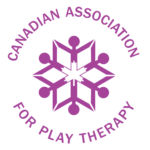Assessment, and Treatment Planning
Training Date: May 7, 2026
Overview:
This course will begin with a review of the history of play therapy, highlighting the important work of Jean Piaget, Anna Freud, Melanie Klein, Donald Winnicott, and Virginia Axline in pioneering this modality. Learners will then look at Play Therapy as an umbrella term and begin to understand the tenets and beliefs on which various models within play therapy rest upon. Members of the class will be invited to participate in small group discussions and case examples to begin to compare and contrast play therapy models and explore what model(s) fit with their clinical beliefs and practice. Current research will be reviewed around the use of prevalent models. An overview of the play therapy process from both a directive and non-directive perspective will be provided and learners will be given the opportunity to walk through this process using case examples and videos.
Learning Outcomes:
- Apply several innovative play therapy techniques to facilitate rapport-building.
- Articulate two key guidelines when meeting with parents for the initial session.
- Implement play therapy techniques to assess children, adolescents, and families.
- List the steps for developing a treatment plan.
Course Instructor: Liana Lowenstein


Assessment, and Treatment Planning
Training Date: May 7, 2026
Overview:
This course will begin with a review of the history of play therapy, highlighting the important work of Jean Piaget, Anna Freud, Melanie Klein, Donald Winnicott, and Virginia Axline in pioneering this modality. Learners will then look at Play Therapy as an umbrella term and begin to understand the tenets and beliefs on which various models within play therapy rest upon. Members of the class will be invited to participate in small group discussions and case examples to begin to compare and contrast play therapy models and explore what model(s) fit with their clinical beliefs and practice. Current research will be reviewed around the use of prevalent models. An overview of the play therapy process from both a directive and non-directive perspective will be provided and learners will be given the opportunity to walk through this process using case examples and videos.
Learning Outcomes:
- Apply several innovative play therapy techniques to facilitate rapport-building.
- Articulate two key guidelines when meeting with parents for the initial session.
- Implement play therapy techniques to assess children, adolescents, and families.
- List the steps for developing a treatment plan.
Course Instructor: Liana Lowenstein
